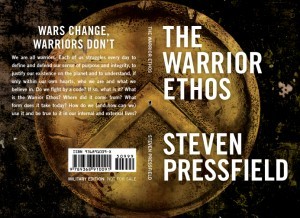The 10,000 Reader Rule
Here’s a post from 2014 that has resonated with many of my book marketing friends. A number of them now use it to explain to their clients why and when it’s best to let their book go and move on to their next project…
The sum total of my twenty-two years of experience in book publishing comes down to the number 10,000.
What is a book publisher’s job?
Is it to get a writer on The Today Show?
Is it to buy a full-page four-color advertisement on the back page of The New York Times Arts and Leisure section?
Is it to make sure a book is on the front table of Barnes & Noble for its first two weeks on sale?
Is it to entertain every cockamamie marketing idea an author has…Why don’t we have an ice cream social in Times Square to promote my book about William Howard Taft?
I’ve contemplated all of these tactics over the years as an editor at the major book publishers, an independent book publisher, as an agent and even as an author for a Big Five publisher myself.
What I’ve concluded is that a book publisher’s job is to get 10,000 people to try the book.
Ideally, those readers will give their full attention to at least its first paragraph. If they like what they’ve read, they’ll read the second paragraph…and so on.
That’s it. Get the book to 10,000 people who will sincerely give it a try.
I know, this pronouncement seems glib and just more headline fodder for Buzzfeed, but think about it.
There are three major trade book-reading generations in the United States today.
1. The Baby Boomers (75 million)
2. Generation X (50 million), and
3. Generation Y (75 million).
According to the National Endowment for the Arts survey in 2012, 50% of Americans read at least one book a year for pleasure. So the total market for trade books in general is half of the total populations of Baby Boomers, Generation X and Generation Y…give or take.
That comes to about 100,000,000 people who will read at least one book this year.
10,000 squared.
10,000 times 10,000, a 1:1 ratio.
Call it magical thinking, but for me there’s just something poetic about square roots. The 1 to 1 element mimics a one on one conversation.
We don’t really pay attention unless we have a direct human-to-human exchange of ideas. And I think that’s truer today than ever before. Far fewer of us are susceptible to generic mass media recommendations. When was the last book you bought because it was reviewed in The New York Times?
We don’t really act on anything until a person we trust tells us it’s worthwhile. One to one.
A couple of years ago, Steve and I put this 10,000-reader rule theory to the test when we published The Warrior Ethos. Just to be clear, we never anticipated that The Warrior Ethos would become a backlist bestseller. We published it as a way to increase Steve’s visibility when his Big 5 publisher was publishing his novel The Profession.
We wanted to do all kinds of promotions with The Profession, especially with men and women serving abroad. We wanted to give them free early copies to get word of mouth going. But the publisher had zero interest in giving anything away…eBook, galley or finished hardcover copy.
We even offered to pay for the giveaway, but to no avail. FREE doesn’t play at the big houses. And to do something FREE that might actually work, in their opinion, could set a dangerous precedent.
If we do something like this for Pressfield, then our other authors will want to do it too and before you know it we’ll be giving away as many copies as we sell.
Don’t forget that the big publishers need to recoup their big book advance guarantees as soon as possible so every dollar out the door without any immediately coming back in is a big no-no.
So, instead of crying in our beer (or rather after we cried in our beer), we decided to create something in the vein of The Profession and then give it away ourselves. Our thinking was that someone who reads a book like The Warrior Ethos would probably be interested in Steve’s other work. And if we can pull someone into our little tribe by being generous and thank all of the soldiers who’ve made GATES OF FIRE a major bestseller at the same time, why not?

Initial exposure of “The Warrior Ethos” was 18,000 free copies to Marine Corps and Special Forces units in Iraq, Afghanistan, and at home.
So through Steve and Callie’s connections within the armed forces, we managed to put 18,000 free physical copies into the hands of men and women who would appreciate Steve’s ruminations about the warrior life through history, the meat and potatoes of TWE.
Then for fun, we put it on sale at Amazon and all of the other online places we could think of to see if we could actually sell any after it had already be read for free.
Retail demand for The Warrior Ethos started out slowly. Which was fine by us. Any money that came in just went right to our red ink giving the thing away in the first place.
But then we noticed that month after month the book sold more and more. It went from 40 copies a month to 60 then 80 etc.
Now, three years later, it sells about 1000 copies a month just through word of mouth. We’ve sold over 50,000 copies combined in paperback, eBook and audio. And we’ve done exactly no advertising or publicity for it. It’s not even in bookstores.
Not bad at all.
Now if The Warrior Ethos wasn’t edited properly; if it didn’t have a compelling beginning hook, middle build, and ending payoff, it would have sunk like a stone. The 10,000 copies we gave away would have been thrown in the trash and forgotten if it was a bad book.
Giving away a bad book won’t help anyone.
But the fact is that The Warrior Ethos was written, edited and published very well. Now it’s even on the required reading list of the Marine Corps and is ordered in bulk by individual military units, first responders, and even high school athletic teams.
We learned a great deal from publishing The Warrior Ethos and the biggest takeaway is “if the book is well done, the more people who read it and like it no matter how they come to it, the more people will buy it down the road.”
Exposing 10,000 people who care about the arena of your book gives you a chance that enough of them will actually read it and then recommend it to someone else. That word of mouth will keep the book alive from one year to the next.
So the question that a publisher should ask about a book is not how many copies it might sell in its first year, but rather if the publisher had to give away 10,000 copies, how difficult would that be?
How hard is it to find 10,000 people who when handed a free copy by a friend would actually read it? If you can’t give ‘em away for free, chances are you won’t sell very many.



